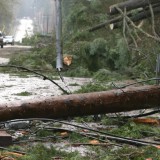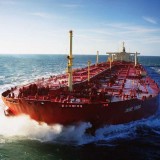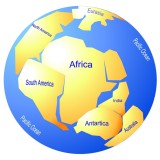“The answer,” wrote Bob Dylan in his iconic ’60s anti-war song, “is blowin’ in the wind.” So the vicious winds that ravaged coastal BC on the morning of March 12th – sustained velocities of 100 km/hr with gusts measured at 137 km/hr – provided that answer.
Outbursts of nasty winds have been harassing coastal British Columbia with increasing frequency in recent years. Ferry sailings, the litmus test of heavy weather for islanders, have been cancelled often, reminding the attentive public and anxious travellers that the winds are once again abnormally high. The March blow, therefore, seemed almost ordinary, except for its intensity. It left 135,000 people without electricity, ripped shingles, roofing and siding off houses, sent driftwood across shoreline highways and parks, closed schools and disrupted businesses. Beloved old trees, lifetime companions, were uprooted or broken by the fierce winds, their smashed and battered parts strewn as wreckage across roads, yards, powerlines and even homes. As one stoical observer cynically noted, “It’s not global warming, it’s global wind-ing.”
If that’s the answer, the problem is that no particular weather event can be definitively attributed to global warming. Climate models predict more extreme weather for a warmer world – more severe storms, more intense rainfall and more protracted droughts. This might explain why Australia’s record “big dry” ended in record floods. And it might account for the devastating monsoons that drowned much of Pakistan. Manitoba has still not recovered a year after its flooding. Sudden storms and higher winds are just part of the parcel for an atmosphere that is hotter and more energized.
Of course, the details of weather are incredibly difficult to predict at any time, even with supercomputers. But the general principle is easily understood. Increased temperatures mean more active weather – somehow, somewhere. The global temperature rise since the beginning of industrialization about 250 years ago has been 1.6°C. BC’s experience of this trend has been a measured average increase of 0.25°C per decade for the last 65 years, an accelerating rise that has exceeded the worst case scenario predicted by the United Nations’ science experts at the
Intergovernmental Panel on Climate Change.
The “answer” that’s “blowin’ in the wind” will never be definitive because variations from normal weather patterns always occur; extreme variations should be rare. But frequent and extreme variations suggest something fundamental is amiss. And the trend should be worrisome.
We live and thrive in the normal. We manage our forests, catch our fish and grow our food based on the normal. We choose sites and build our houses based on normal conditions. The trees that shade them and embellish our properties do so under the grace of normal. We survive and flourish in the harmony of normal. The abnormal is always disruptive and threatening, something we don’t want to encounter. This explains why we prefer a reassuring answer to a troubling one, and why we are so reluctant to acknowledge the abnormal. Such an admission induces insecurity, anxiety and even fear.
This is the psychology underlying our collective reluctance to admit the significance of these recent windstorms and to accept the notion of global climate change. Psychologists would identify this inner dynamic as cognitive dissonance, an irresolvable conflict between preference and evidence. Our usual inclination is to favour preference – sometimes beyond the futility of denial – until dire events eventually force a reluctant realization.
Have the recent windstorms convinced anyone that global climate change is a reality? Have the heavy rains, record snowfalls on mountains, flooding events, melting permafrost, receding glaciers and pine beetle catastrophe been confirming evidence that the weather is different enough to be ascribed to something unusual? Did the mayhem caused by the March 12th storm create a moment of epiphany for those who heard the winds roar, who felt their houses tremble, who hoped anxiously that the next flying object or falling tree would miss anything they had built or owned or cherished?
Reality sometimes collides with credibility. After the March 12th wind had subsided and the weather turned an ironical and incongruous calm, the surrounding wreckage seemed alien, a bizarre figment of illusion that somehow didn’t correlate to ordinary experience. How can one day be so different from the day before? Where is the familiar tree that once filled the sky above the back yard? What flattened the fence? Has anyone seen the lawn furniture? Why is the roof leaking? The routine drive to work somehow became an obstacle course of wrenched branches, wayward driftwood, dangling powerlines and discarded possessions, as if familiar and dignified neighbourhoods had suddenly become bereft of the propriety and decorum that once identified them as orderly and respectable.
Perhaps, for some people, March 12th was no different than any other day, just another storm that brought more than the usual inconvenience – no “answer blowin’ in the wind”. But for others, the day was an epiphany, a sorry awakening, a clear answer that brought a helpless grieving for lost innocence.










